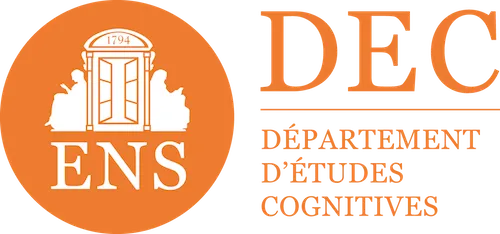

Peer learning: the impact of peer learning
Learning is evolving and with it are teaching practices. Today, courses are no longer limited to top-down courses or traditional online modules. One of the most effective levers for develop skills in a professional setting or in a training organization is undoubtedly peer learning, or peer learning.
Based on exchange, cooperation and co-construction of knowledge, peer learning places the learner at the heart of the process, by promoting real collaborative work between colleagues. This learning mode allows sharing knowledge in a fluid way, while stimulating commitment and collective thinking.
This way of learning fits perfectly into interactive training paths, especially when they are designed via a innovative training platform like Didask's. Discover the characteristics of peer learning, its benefits and how to effectively integrate it into your professional training strategy.
Understanding Peer Learning: definition and origins
Peer learning is based on a simple principle: learn by collaborating with peers. Far from a classic top-down approach where the trainer transmits knowledge, this is a horizontal exchange between learners.
Historically, this method has its roots in constructivist theories, especially those of Piaget and Vygotsky, who showed that social interaction is a key driver of learning. The group then becomes a catalyst for skills, where everyone plays the role of both teacher and student.
In a professional world where knowledge is constantly evolving, this collaborative dynamic offers a real answer to the rapid and adapted to the field skills development.
Key characteristics of peer learning
Peer learning is more than a simple discussion between colleagues. It is a structured educational method, which is based on several fundamental principles:
- Reciprocity: each participant gives and receives knowledge in a balanced exchange logic, valuing individual expertise.
- The co-construction of knowledge: Learners create answers, solutions, and reasoning together, which reinforces their understanding and autonomy.
- Strong interactivity: through engaging educational activities (quizzes, case studies, games, videos, scenarios, forums, etc.), learners actively appropriate the content.
- Self-regulation: participants manage their learning pace, which reinforces their commitment and develops their sense of responsibility.
This type of learning also promotes social interactions, collective emulation and the emergence of informal knowledge that is very useful in a professional context. Thanks to digital tools, such as a LMS (Learning Management System), it becomes possible to design courses combining peer learning, interactive modules and educational content adapted to each profile.
Peer Learning: a response to corporate training challenges?
Yes, without a doubt. Peer learning meets several crucial needs for businesses and training organizations:
- Encouraging learner engagement by actively involving them in their own learning.
- Capitalize on internal expertise: employees also become trainers and strengthen their skills by transmitting their knowledge.
- Creating a dynamic experience, far from passive lectures, thanks to interactive and collaborative formats.
- Adapting to rapid changes in business skills, by facilitating the continuous updating of knowledge by peers.
- Stimulate collaborative work and the feeling of belonging to a group, two powerful levers for loyalty and motivation.
This interactive training mode, when integrated into a platform like Didask, also makes it possible to reduce training costs, while developing a learning culture within the company. Provided that it is well supervised and structured, peer learning allowscombining educational performance, skills transfer and collective development.
How does a Peer Learning session work?
A peer learning system can take many forms depending on the educational objectives and the tools available:
- Discussion groups on a business topic or a professional problem.
- Collective resolution of practical cases inspired by situations experienced in business.
- Debriefing of videos, articles or e-learning modules in groups or in pairs.
- Co-evaluation exercises or projects, with cross-feedback.
- Collaborative creation of training content, led by expert learners.
These exchanges can be done in person, but also remotely thanks to digital platforms. In an interactive Didask course, it is possible to integrate moments of asynchronous exchange (comments, written feedback) or synchronous (videoconferences, surveys, role plays, interactive simulations, etc.).
Thanks to the AI assistant by Didask, content can also be generated or adapted automatically according to profiles and communications between peers, thus facilitating a personalized and evolving learning experience.
Peer to peer and peer pedagogy: what is the difference?
The peer-to-peer method, often used in digital technology, refers to an equal relationship between two entities. In training, it means that each learner becomes an actor in the transmission of knowledge, drawing on their experience, experiences and knowledge to fuel exchanges.
Peeragogy, a more recent concept, goes further: it aims to building collaborative learning environments, where peers not only co-construct content, but also goals, methods and the pedagogical framework itself. It is a collective and evolving approach, centered on the autonomy and intelligence of the group.
This is precisely what allows the software tool author by Didask, by giving a hand to teaching or business teams to co-create interactive modules, contextualized to their reality on the ground. By relying on the Educational AI and adaptive functionalities, it then becomes possible to offer hybrid courses combining theory, practice and peer exchange.
Advantages and disadvantages of peer learning
The benefits of peer learning
- Fast skills development through practice and exchange.
- Reinforcement of interactivity in training courses.
- Valorization of internal knowledge: business experts, juniors, seniors.
- Reduced training cost, thanks to the reuse of internal skills.
- Creation of a climate of trust conducive to learning.
- Development of soft skills: listening, feedback, cooperation.
The limits of peer learning
- May be less effective without a clear pedagogical framework.
- Requires continuous group animation.
- Requires significant initial set-up time.
- Not suitable for all types of content (technical, regulatory, etc.).
With the Didask LMS platform, these limits are removed: everything is designed to guide trainers, encourage active participation and promote a smooth learning experience.
Peer Learning and neuroscience: why does it work?
Les cognitive neuroscience research confirm the benefits of peer learning. Learning is all the more effective when it is:
- Active: learners manipulate, question, debate.
- Contextualized: exchanges make sense, because they are linked to concrete situations.
- Social: interactions enhance memory and understanding.
This is exactly the educational promise of peer learning. By adding adaptive features (like the adaptive learning at Didask), it is becoming possible to further personalize the courses according to peer interactions.
How does Didask support companies with Peer Learning?
The Didask LMS platform natively integrates peer learning logics. Thanks to its numerous tools :
- The AI assistant makes it easy to create interactive educational content.
- The Author tool allows you to design routes in a few clicks.
- The Didask training catalog can be enriched by co-constructed modules.
- Educational AI adapts content to the needs of groups.
- The LMS tool promotes interactions between employees at each stage of the journey.
Whether by integrating videos, quizzes, educational games or Situations interactive, Didask makes peer learning simple, scalable and effective at the same time for all companies and training organizations.
Peer learning is not a passing trend: it is a powerful pedagogical approach, based on the interactivity, collaboration and autonomy of learners. It perfectly meets the requirements of modern vocational training, both in business and in organizations.
With Didask, this method makes perfect sense thanks to a structured digital environment, an engaging user experience and a intelligent integration of AI tools. So, ready to turn your training into real collaborative learning experiences?
Make an appointment directly with our eLearning experts for a demo or simply more information.












